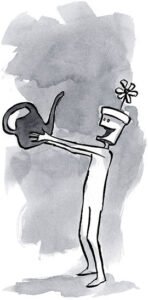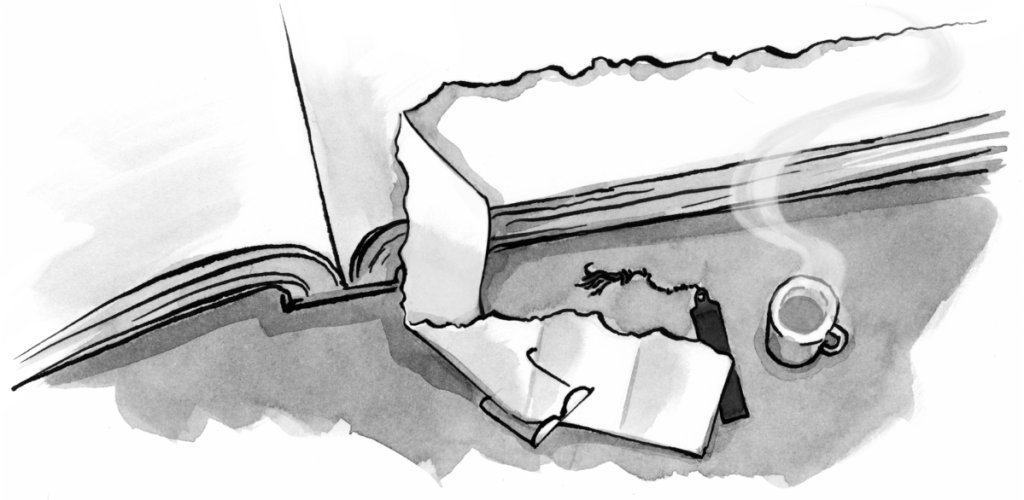Like many modern parents, I probably tell my kids to “go look it up online” about a hundred times a week. Where I grew up poring over the World Book Encyclopedia sprawled out on my living room carpet, today’s learners have a potentially better, more immersive multimedia learning platform at their fingertips. Anything we want to learn about—from microscopic organisms to the world’s largest work of art—can be found on the web. The internet is the greatest contribution to learning since the printing press.
Article Continues Below
At least, that’s the dream; the reality is a little less sparkly.
Most websites are not learner-friendly. Web creators might aim for beautiful, accessible, usable interfaces to house their smart, web-native content, but they don’t often have learners’ goals or needs in mind—if they even know what those needs are.
As an industry, we haven’t done our best to make our content-rich websites suitable for learning and exploration. Learners require more from us than keywords and killer headlines. They need an environment that is narrative, interactive, and discoverable.
Narrative is essential to learning. From epic films to conversations with toddlers, all human communication revolves around storytelling. We use story to convey information and to make emotional connections with each other. Writers use narrative to align what they know about the world with what their readers know about the world, and through the exchange of story a sense of trust is born. The reader identifies with the writer, and thus with the information presented.
But just as important as the narrative consciously built into a website is the narrative readers create for themselves. Readers build their own narrative as they work their way through a website, moving from one content object to another. This narrative emerges from interrelationships between content items and helps readers turn fragmentary pieces of information into knowledge. The more clearly a reader can discern these relationships, the clearer and more meaningful the narrative he’ll be able to construct.
An engaging narrative leaves the door open for interactivity—the heart of learning. But I’m not talking about Flash interfaces or buttons you push to make things happen. I’m talking about a more timeless, more pervasive form of interaction. I’m talking about the ability of what we read online to act upon us—to change us.
“What we find changes who we become” are the words written across the top of information architect Peter Morville’s book, Ambient Findability. These important words remind us that each experience, each sentence is a possible platform for change in our readers.
Readers and learners delve into content-rich sites because they hope to be changed in some way. What they read, what they find amidst our words and images, can alter their outlook, shift their worldview, and give them something they didn’t have before. The more context learners have, the better they can integrate what they find with what they already know and believe. As Wordnik.com founder and CEO Erin McKean says, “More context equals more learning.”
For my seventh birthday, an aunt gave me the Holy Bible as a gift. But it wasn’t just any Bible. It was a student Bible, organized for study and personal understanding.
An introduction advised me not to read the book straight through (an activity I was in no danger of undertaking), but to choose a prescribed reading path based on my goals and interests. Reading paths were arranged by topics including important women of the Bible, the origins of the holidays, and war and conflict.
At seven, I didn’t find any of those paths appealing, so I put the student Bible on my shelf and forgot about it.
Years later, Lutheran school had turned me into something of a Bible scholar. I knew the Bible backward and forward: All the stories, all the lessons. One day, clearing out my bookshelf for college, I found the student Bible and thumbed through one of the reading paths.
It was like discovering those stories all over again. The change in context—reading about women all in one go, reading about kings all at once—gave me new perspective. The new relationships I’d found supplied a brand new narrative. The words were the same. The events were the same, but my vision had shifted. My understanding grew.
Context changes things.
Different people learn in different ways. Some learners prefer linear, organized information, and traditional website navigation methods work very well for them. But other learners will take a wilder approach, eschewing planned paths and order in favor of exploration and investigation. (How many of you Twitter users are in the habit of blindly clicking a friend’s bit.ly link with no idea where it will take you? It’s the Steve Irwin approach to discovery on the web—“I’m going to click this here link…just to see what happens!”) These learners want to follow their curiosity rather than a prescribed path. Building discoverability into our websites helps them do just that.
Discoverability, as I use the term, refers to how well a website lends itself to organic exploration by a curious reader. Rather than relying exclusively on an orderly, hierarchical navigation, a discoverable website helps readers choose their own adventure. Discoverability helps readers move seamlessly from one content object to another, allowing them to build mental and emotional relationships among many different pieces of information. It helps the reader answer the question, “What should I read next?” (At best, it prevents them from having to ask the question in the first place.)
Wikipedia is discoverable. Its multitude of self-referential links allow readers to move from topic to topic easily and without interrupting their psychological flow. It isn’t unusual to begin reading about neuroscience and end up reading about LOLCats (not that I speak from personal experience). This discoverability is important—it offers valuable (and often entertaining) context switches, and helps learners discern new topics of interest.
When Twitter changed its @ reply settings so that users could only see replies to other people they follow, the Twitterverse erupted with anger and bewilderment. Many users felt the change drastically reduced Twitter’s discoverability. No longer could a snippet of an unfollowed conversation produce new leads, or possibilities for new relationships or experiences. That single change limited Twitter’s usefulness as an enhanced tool for learning.
As a discoverability tool, simple hyperlinking is effective, but it doesn’t do enough to illuminate relationships between content items. Even tagging can only show first-degree relationships—if items don’t share a common tag, a reader can’t see a relationship, even though one may exist. (For example, a simple tag structure can show sibling or parent-child relationships, but not grandparent or cousin relationships.) Since a good understanding of how items relate to each other is key to a good online learning experience, we have to do more than provide simple hyperlinks to guide readers through our websites.
Discovering roads less traveled#section6
When we want to explore a new territory in the tangible world, we don’t rely on text-heavy explanations. We look to maps. Visual representations of the terrain we wish to travel, whether real or virtual, are wonderful, practical tools for helping us create context, discern relationships, and get around.
Groundwork has already been laid for making websites more discoverable. The following brief case studies may help web creators envision ways to make the web better for learning.
Knowledge Cartography#section7
The Knowledge Cartography research project seeks to build a visual narrative that enhances communication and understanding. By illustrating relationships within a network, knowledge maps build a narrative quite different from hierarchical navigation arranged by taxonomy. Knowledge maps demonstrate proximities, similarities, and alternatives. A good knowledge map can help a reader identify potential exit points—ways to browse from his current content item to something new and different.
If such visual, interactive maps could become part of a website’s wayfinding framework, they could dramatically change the way learners find information online.
Of course, the infrastructure required to syndicate our managed content real-time to a knowledge map might not quite exist yet. Still, there’s little reason knowledge cartography shouldn’t have a place in content-rich websites. Thinking of our websites as worlds to be explored as well as catalogs to be searched can help us create richer, more complete experiences for our readers.
Aquabrowser is a search and discovery platform for libraries. The Flash-based tool allows visitors to visually explore topics and how they relate to each other. Users enter a search term, and Aquabrowser returns an interactive “mindmap” of associated terms. As a learner browses from topic to topic, Aquabrowser updates with new associations and even illuminates relationships between associated words and the path the learner took to create the current mindmap. These “discovery paths” help learners investigate a topic by exploring its relationships to other topics. This organic approach to wayfinding helps learners build an internal content matrix—a multidimensional view of any given subject.
By allowing users to flip between associated themes, Aquabrowser helps learners see dissimilar content items as potentially related, broadening both their understanding and possibly their areas of exploration and investigation.
While the Aquabrowser is specifically designed for libraries, the principles that support the product could easily be applied to any content-rich website.
Sputnik Observatory#section9
Sputnik Observatory does two cool things that help a learner in his quest for information. When playing a video, Sputnik displays related videos as links, providing relevant exit points to help a learner pursue an interesting thought. But because this is video, and the relayed content has a definite, temporal value, the “related content” changes as a function of time. When the subject in the video switches his or her discourse to another topic, Sputnik responds by changing the related content on the fly. It’s almost like having a conversation with the content, and works wonderfully to guide learners to new content items.
The second smart thing Sputnik does is it allows users to save and share their desire paths—the actual paths they took to get from one piece of content to another. Anyone who has ever looked at a carefully planned park or walking landscape knows that people don’t always take the paths the designers provided. Desire lines—worn pathways through grass, for example, where people chose to walk instead of along a constructed footpath—demonstrate that people will create a way through a landscape, real or virtual, that best suits their needs. Sputnik allows people to track their own desire lines and share them with others, ostensibly creating a crowdsourced tour through the website.
In an interview on uxweek.com, Erin McKean commented that “People like to have meaningful (or at least entertaining) conversations, and to feel a sense of excitement and discovery. You give people all that and you’ve made a good Internet!” The ability to explore a website’s interrelationships, to navigate not merely by way of major thoroughfares but via desire paths and lesser-traveled roads of our own devising is fundamental to an immersive, exciting learning experience.
Tools like Aquabrowser, Sputnik’s interface, knowledge cartography, and even simple hyperlinking help users switch contexts and build relationships between information items. But the tools are only that—tools to assist a reader in his exploration of our content.
We must be sure to create a rich, nuanced landscape that lends itself well to the kind of organic, natural exploration that benefits our readers. Our creations are not fully independent content items, but meaningful participants in a greater narrative. If what we find changes who we become, we have to be vigilant about creating content worth exploring, worth discovering.




